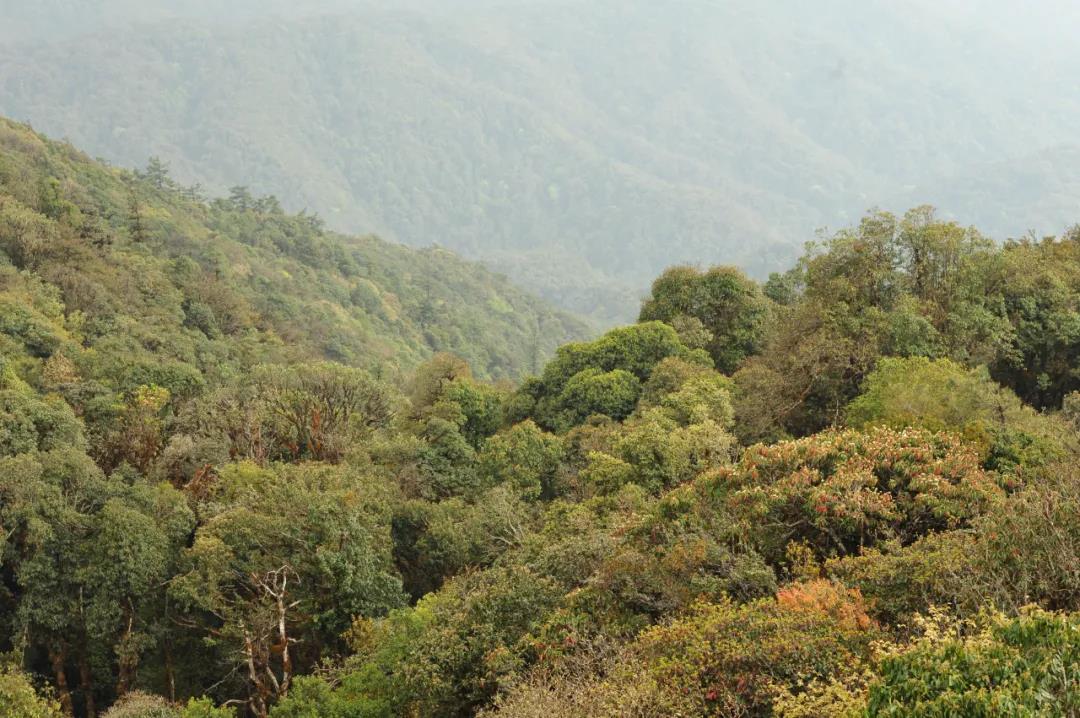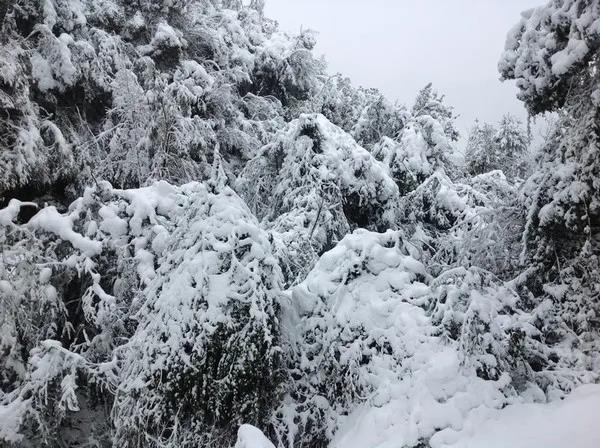Forests are large carbon sinks that play key roles in the global carbon cycle and in global warming mitigation. Previous studies have shown that the ecosystem functions of subtropical forests are vulnerable to extreme snowfall disturbances. However, little research has addressed the radiative forcing and the underlying processes associated with vegetation recovery in the context of post-disturbance.
In a study published in Global Change Biology, researchers from Xishuangbanna Tropical Botanical Garden (XTBG) investigated the effect of an extreme snow event on the ecosystem radiative forcing changes in Ailaoshan subtropical forest.
In January 2015, a heavy snow event occurred in Ailaoshan subtropical forest in SW Yunnan. Researchers from XTBG have previously shown that the snow event caused severe damage to the vegetation and substantially reduced annual net CO2 uptake of that year. They tried to further evaluate the ecosystem resilience following such snow disturbance by tracking the processes (CO2 balance and surface albedo) associated with radiative forcing during vegetation recovery.
The researchers analyzed the ecosystem scale albedo and 9-year (2011–2019) CO2 flux together with the corresponding vegetation data to see how many years the forest took to recover the vegetation net ecosystem CO2 exchange (NEE) and albedo after the snow event. They further wanted to know whether vegetation recovery prompted other processes and how the total radiative forcing changed after the snow disturbance.
They found that the vegetation recovered to the pre-disturbance level along with the albedo in the fourth post-disturbance year (2018) and the net ecosystem CO2 exchange recovered a year later (2019), suggesting a severe, lasting impact on the ecosystem carbon balance.
While the radiative forcing from both albedo change and net ecosystem CO2 exchange were positive, the study showed that albedo overrode carbon balance and dominated total radiative forcing in response to the vegetation damage as well as over the process of vegetation recovery. Overall, the extreme event caused a positive (warming effect) on net radiative forcing which was predominantly caused by changes in surface albedo rather than those in net ecosystem CO2 exchange.
Moreover, they demonstrated that the vegetation recovery after a disturbance could be associated with species composition alterations, which determines the ecosystem feedbacks to the climate change.
“The overall 9 years of study proved that the subtropical forest ecosystem serves as a carbon sink; however, snow-induced damage to the canopy greatly reduced CO2 sink strength,” said SONG Qinghai, principal investigator of the study.
Contact
SONG Qinghai Ph.D Principal Investigator
Key Laboratory of Tropical Forest Ecology, Xishuangbanna Tropical Botanical Garden, Chinese Academy of Sciences, Mengla, Yunnan 666303, China
E-mail: sqh@xtbg.ac.cn

Ailaoshan subtropical forest. (Image by XTBG)

Extreme snow event happened in Ailaoshan mountains in 2015. (Image by XTBG)


